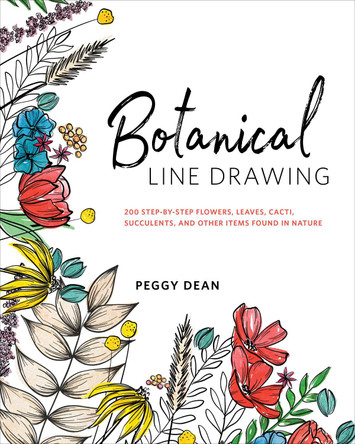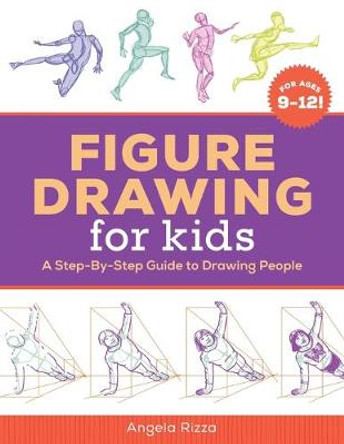Description
About the Author
Penny Brown trained and worked as a theatre designer for 10 years before an increasing love of painting and drawing led her to illustration. She works in watercolour, graphite and most recently, cut paper collage. She has illustrated many books on craft, textiles, design, natural history and gardening. She exhibits her botanical paintings and drawings with The Society of Botanical Artists in London, Frankfurt and Spain. She has won several awards including the prestigious President's Prize at The SBA exhibition in 2015. She is also a member of The South West Society of Botanical Artists and opens her studio regularly for Dorset Art Weeks. She looks forward to continuing her parallel careers in botanical art and illustration.
Reviews
Summer 2018
The artist covers a wide range of subjects, from flowers to fruit, vegetables and more. Penny's material is graphite pencil and her style gentle and sensitive, with plenty of detail while at the same time conveying some of the soft irregularity that characterises natural objects. The book is progressively structured and, after some useful technical discussion, begins with a simple flower that will get your hand and eye in. This leads on to an exercise in tonal drawing and further demonstrations. These are punctuated with field notes, describing the subjects in question and technical notes and exercises. It's nicely and sympathetically done.
* The Artist *This is a comprehensive guide that will take you through all the stages of drawing flowers, fruit and vegetables. Penny's medium is pencil and the concise technical notes she opens with are in context to the point. It's always a good sign when an author excludes anything that isn't relevant at this point as it invariably means you aren't going to get bogged down in excessive detail later.
The book progresses by way of a series of demonstrations that are also studies of the subject in question, with field notes, detail sketches and lessons on what to look for and how to observe. As is common with natural subjects, similarities and a wealth of detail can be confusing and it's as essential to know what to discard as what's important. Alongside these exercises, you'll find information about composition, perspective and the use of photographs.
This is a gentle and nicely progressive guide that, while it requires a reasonable level of skill in drawing, doesn't assume too much previous knowledge of botany and will take you from first steps to competent work with more complex subjects by an entirely practical route.
* Artbookreview.net *March 2018
This is a beautiful book, it's a very personal approach, contents include ten step-by-step projects ranging from simple to the more complex, with the most detailed instructions, the most detailed instructions to ensure that you achieve the very best instructions to ensure that you achieve the very best results, along with Penny's own observations and advice.
* Hot Brands, Cool Places *March 2018
Artist, Penny Brown, brings us a brand new step-by-step guide to drawing flowers, vegetables, fruit and other plant life in Botanical Drawing. Ten step-by-step prokects will help to get you started , ranging from simple studies to complex finished drawings and excellent diagrams and source photographs provide invaluable reference mateiral as you build your skill and confidence level in this ancient art form.
* The Leisure Painter *Botanical drawing differs from most other types of art by its emphasis on accuracy. Beautiful illustrations of this type have adorned pages in herbals and books on botany for centuries. This useful primer shows the artist how to go about producing this type of work through projects and using easily obtainable materials.
Graphite pencils are the tools you require to tackle the two exercises and ten projects in this book. A nice touch is that everything in the book is drawn using them, including the pictures of what you need to buy. This is not much (you probably already own most of it), so you can start straight away by organizing your workspace and then "taking a line for a walk" and getting limbered up for some drawing. Learn about tone and various mark-making techniques such as cross-hatching, and look at a drawing where each pencil type (H to 2B) has been labelled. Each project is very thorough, showing in captioned stages how to first draw the outline and then add the shading and other details. The author encourages the student to observe carefully, and to this end there is a short section on plant structure, including labelled diagrams and information about gathering subjects for drawing. Subjects for the projects include fruit and vegetables as well as grasses and flowers so a wide range of shapes and plant types are covered. Topics as diverse as composition, working in the field or from photographs and plenty of good advice in the form of "field notes" are all covered. Anybody keen on having a go at this type of work ought to find this book useful, although it is not a volume for total beginners on how to draw; rather it is aimed at the artist who wants to try something new and already knows the basics. A good grounding in a subject sparsely covered in art primers.
* myshelf.com *Book Information
ISBN 9781782212607
Author Penny Brown
Format Paperback
Page Count 144
Imprint Search Press Ltd
Publisher Search Press Ltd










